Easily Track and Count Your Calories with Lean
Database, Barcode Scanner or AI Photo Analysis
Lean offers 4 powerful tools to easily track your calories.
It is important to remember that Lean is the application that allows you to calculate in the most reliable way your TDEE and consequently the right amount of calories to eat each day.
Method 1: :
AI-Powered Photo Scan Analysis
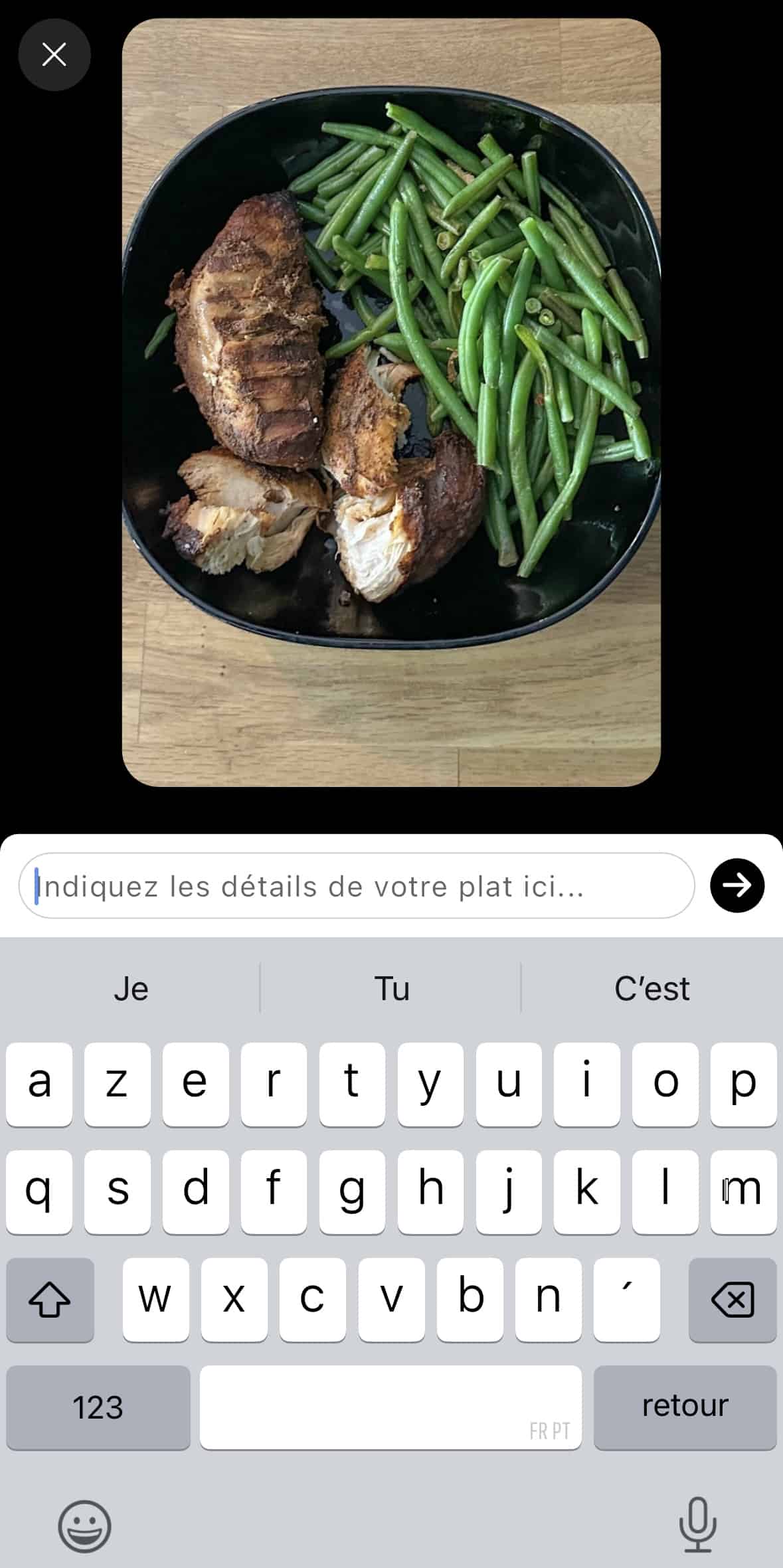
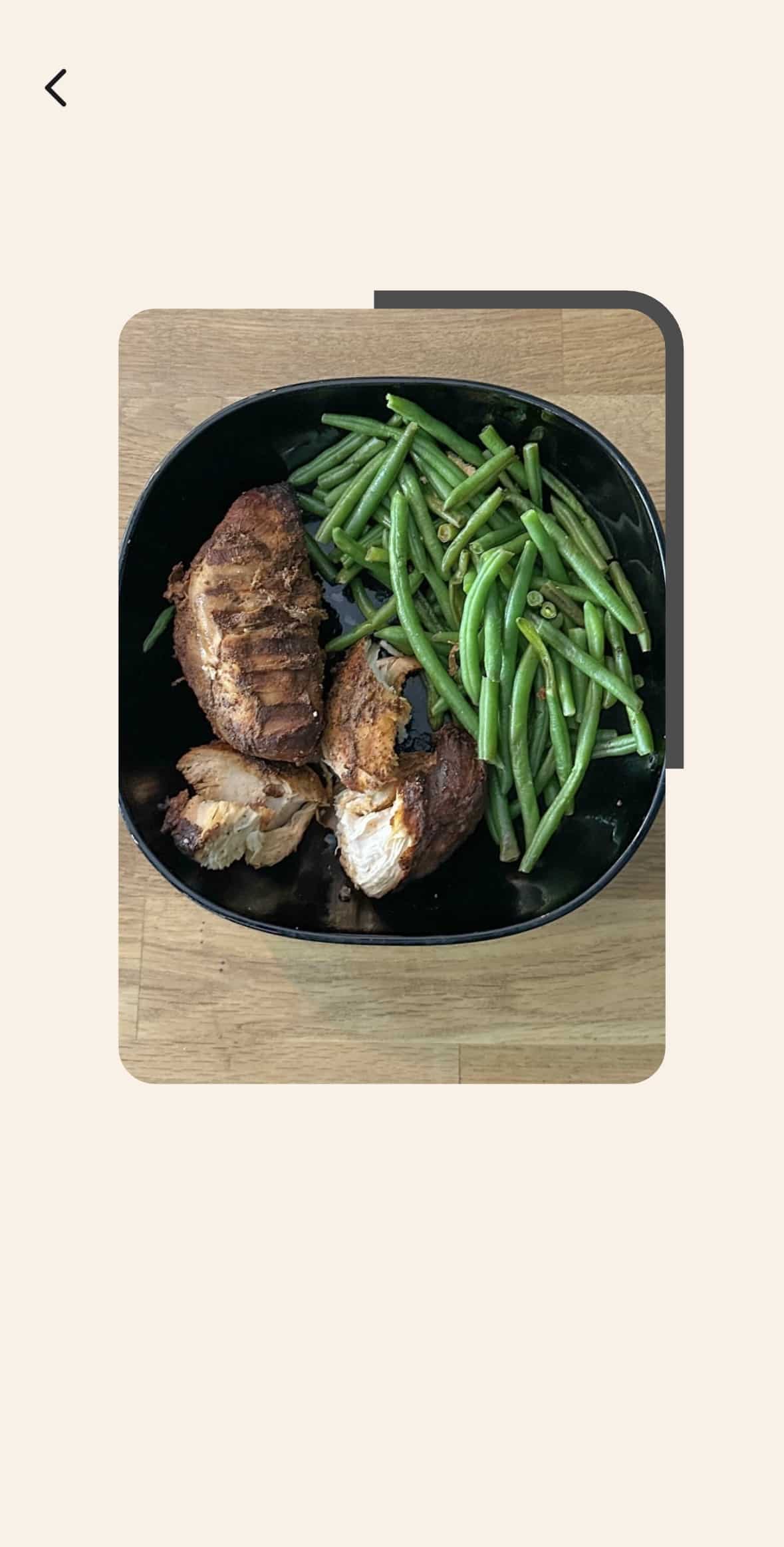
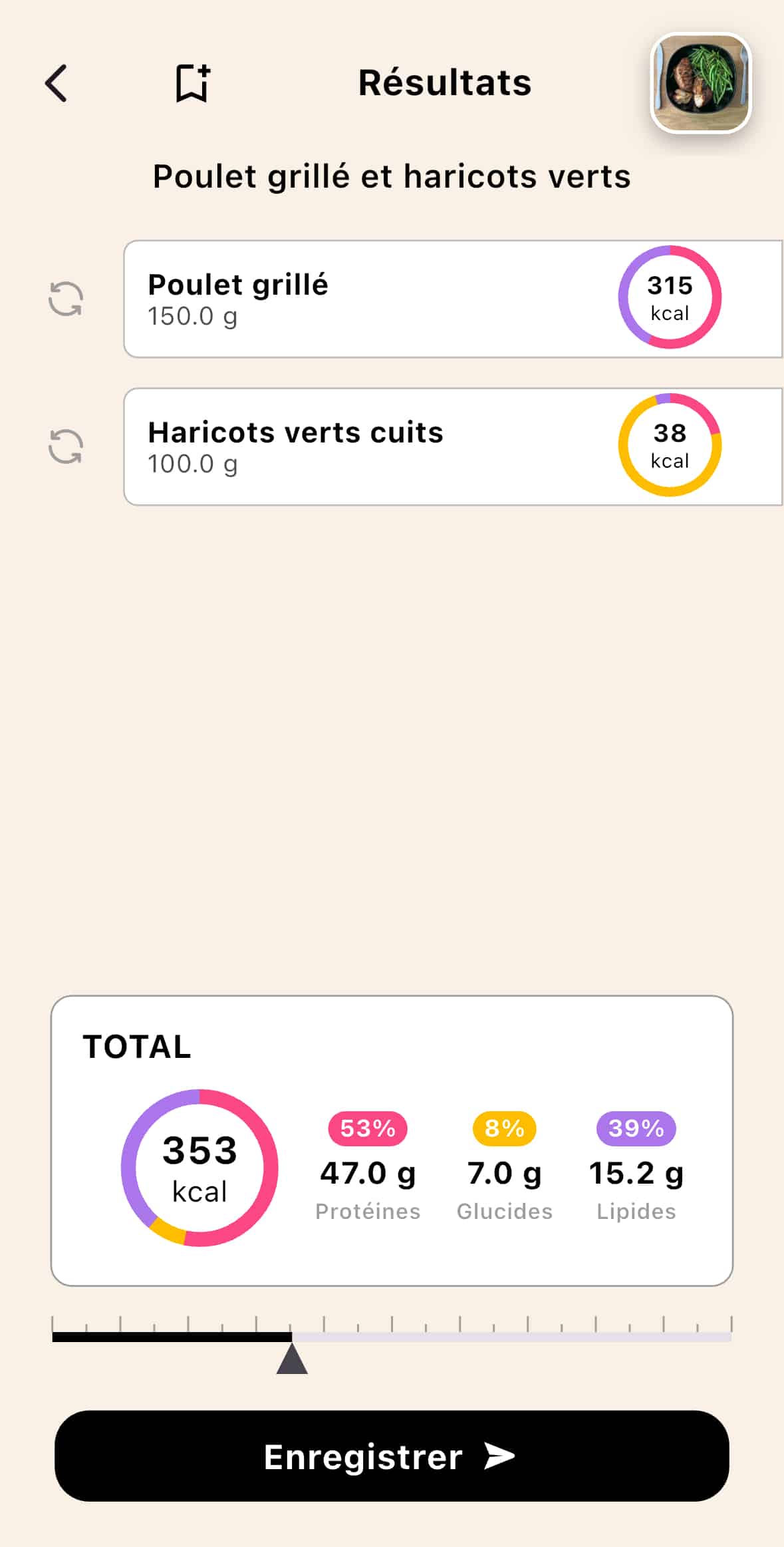
Never Tracked Your Calories Before? Do you find calorie counting long and tedious? Want to reach your body composition goals without the hassle?
AI Scan is made for you..
80% of calorie tracker users quit after 3 months
Tracking calories is hands down the most effective method for losing weight. But studies clearly show that 80% of users give up after just 3 months of using calorie tracking apps..
Why?
Because while calorie tracking and weighing your food is effective, it's also highly restrictive in the long run. It often becomes a barrier to enjoying a vibrant social life — like eating out at restaurants, parties, social events, , family dinners... etc…
Lean set out to fix that. To make calorie tracking more flexible and accessible,Lean developed AI-powered meal photo analysis, qui donne des résultats très cohérents — a feature that provides highly reliable results with just a ±10% margin of error.
Why is Lean’s AI Photo Scan Superior?
Unlike most apps that use AI meal scanning, Lean uses a two-step identification process:
- Step 1: Identification : Analysis and recognition of each food item present in the photo.
- Step 2: Quantification : Estimation of the quantity for each identified food item.
Lean VS Cal AI
The problem with many apps using AI meal scanning is that calories and macronutrients are estimated as a single overall value, without breaking down the individual components. This gives users no flexibility if they want to later adjust the quantity of a specific food item.
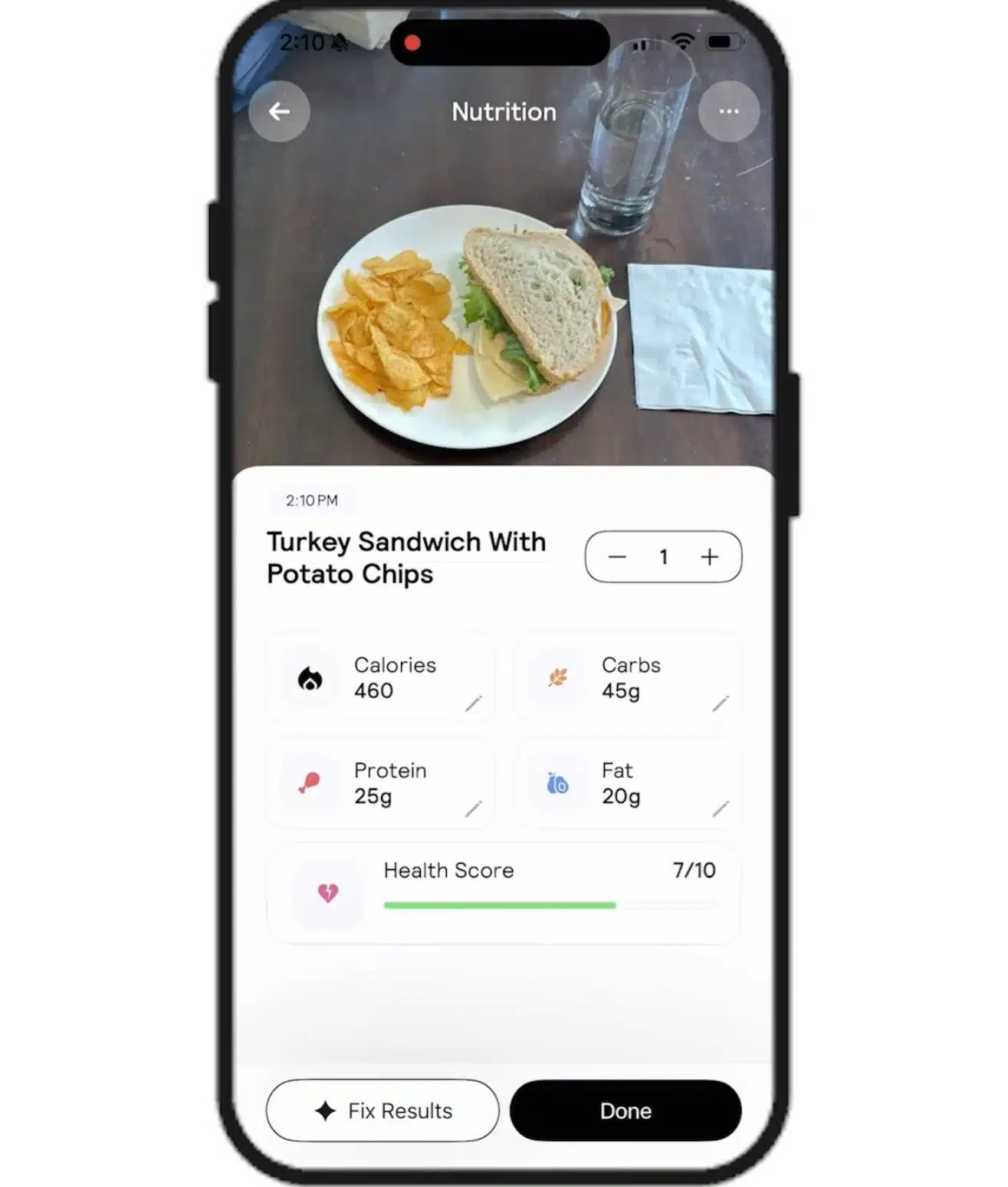

For example, in this AI scan done with the Cal AI app, calories and macronutrients are calculated once for the entire dish:
- Impossible to adjust the quantity or the Protein/Fat/Carb breakdown Protéines/Lipides/Glucides for a specific food item
(e.g., you can’t change the amount of chips if you had a second serving) ❌ - Impossible torescan foralso known in scientific literature as a SINGLE item if it was misidentifiede.g., the AI might confuse turkey ham with cheese)❌
With Lean :

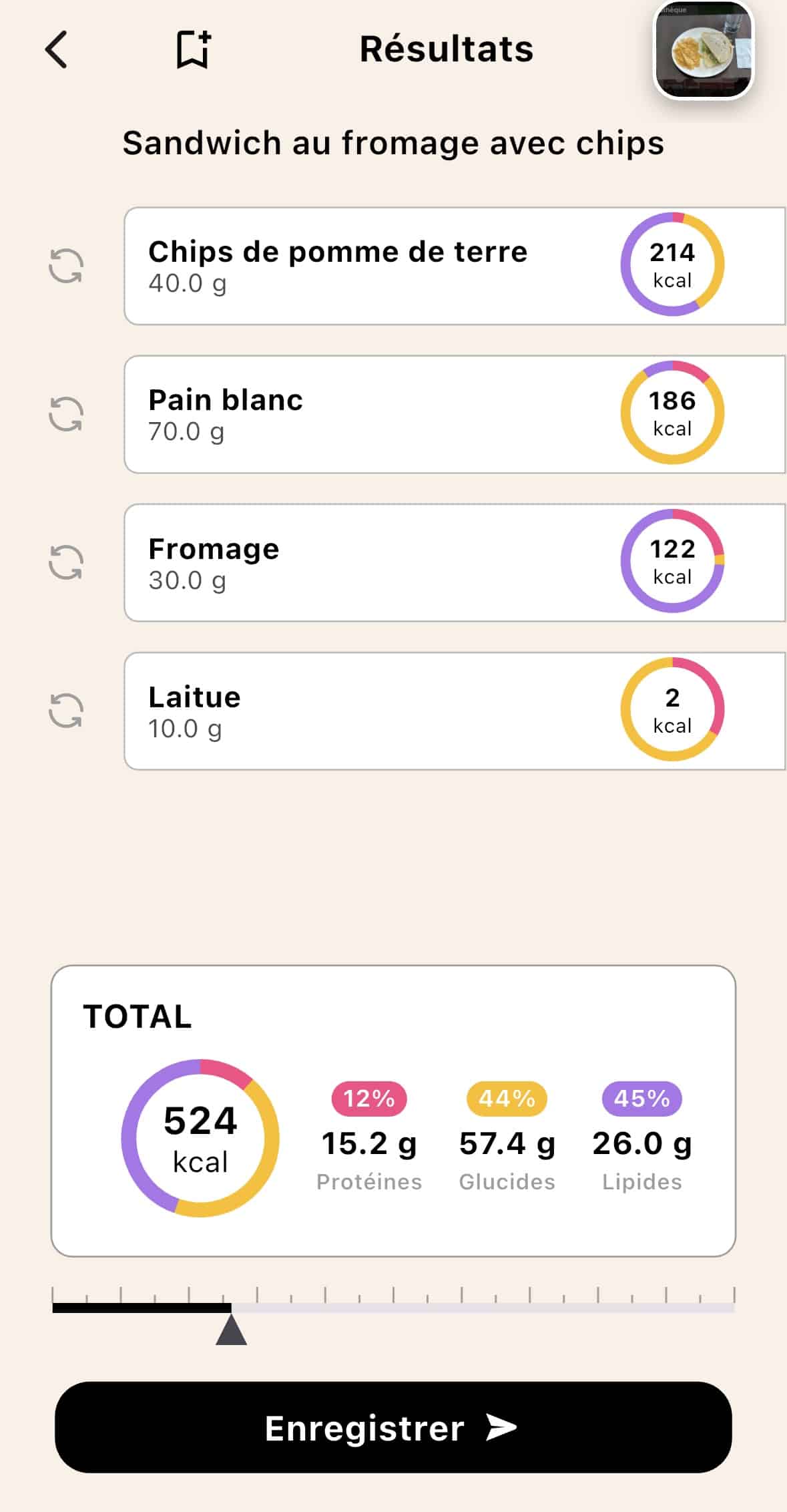
AI Scan Results — Food-by-Food Identification

✅ Ability to adjust the quantity of a specific food item
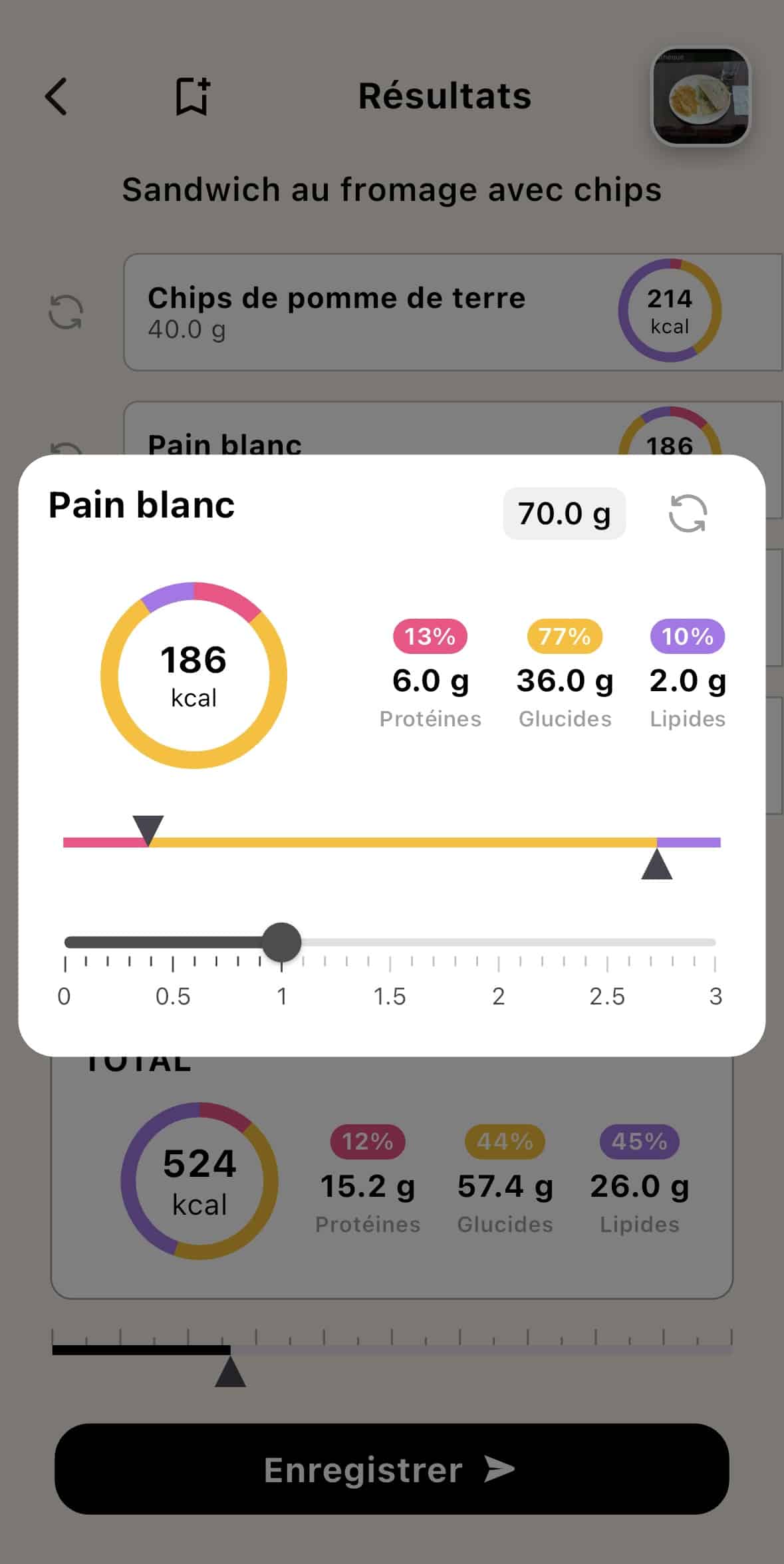
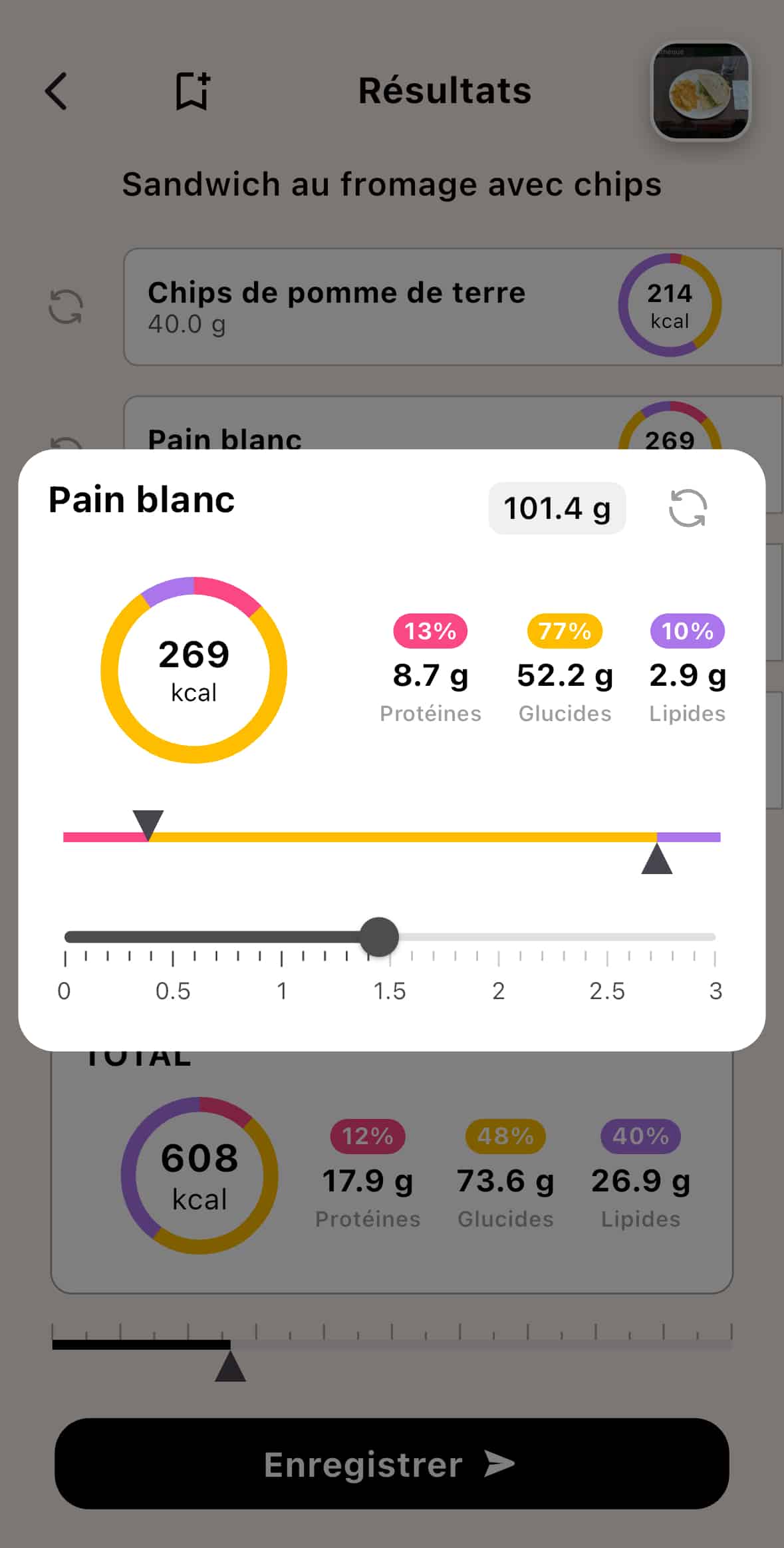
Adjusting the bread quantity in the sandwich: changed from 70g to 100g.
✅ Ability to adjust the macronutrient breakdown of a specific food item
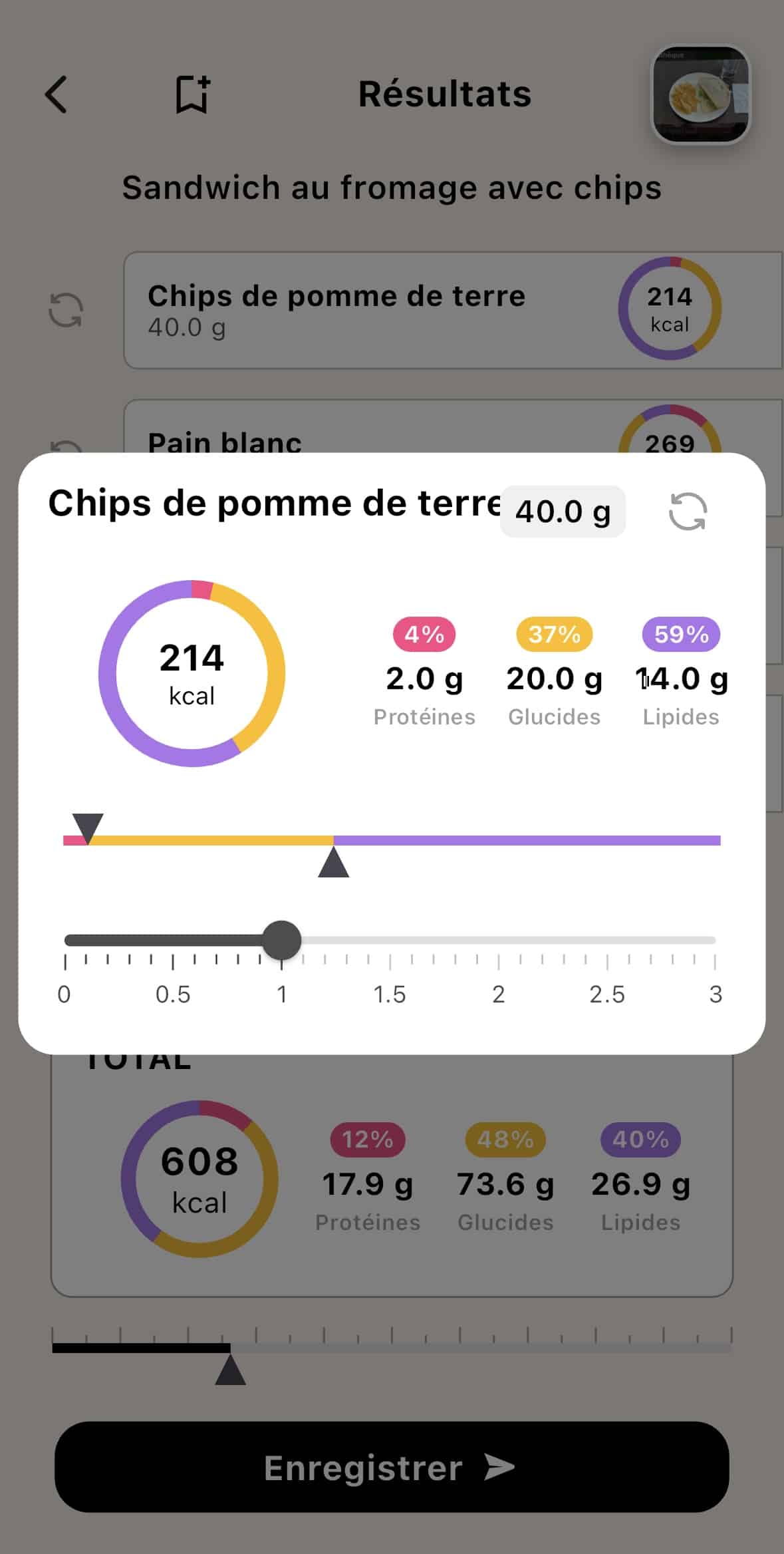
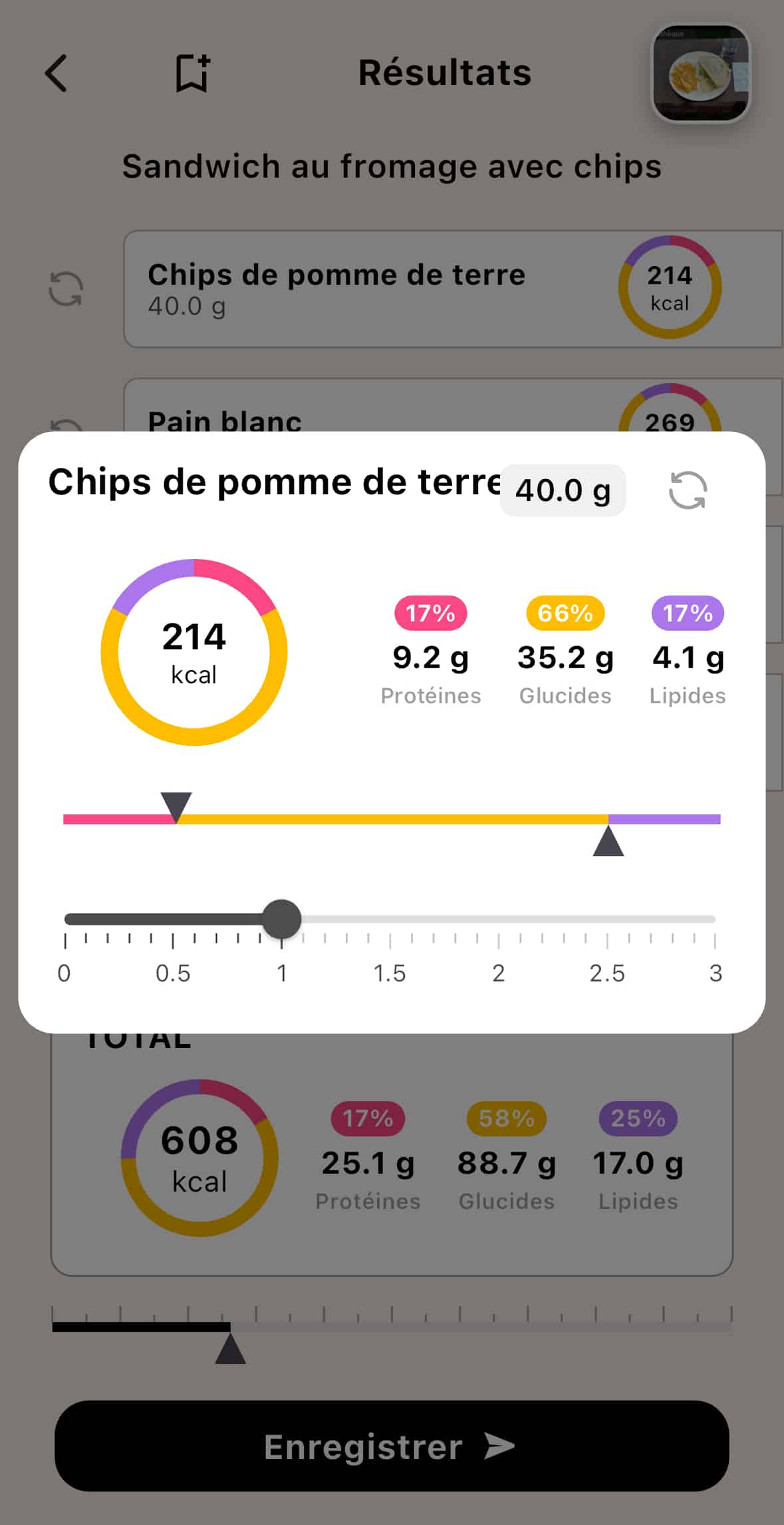
Let’s say the chips are a special low-fat version — with Lean, you can easily adjust the macronutrient breakdown to reflect that and indicate they contain less fat.
✅ Ability to rescan a specific food item:
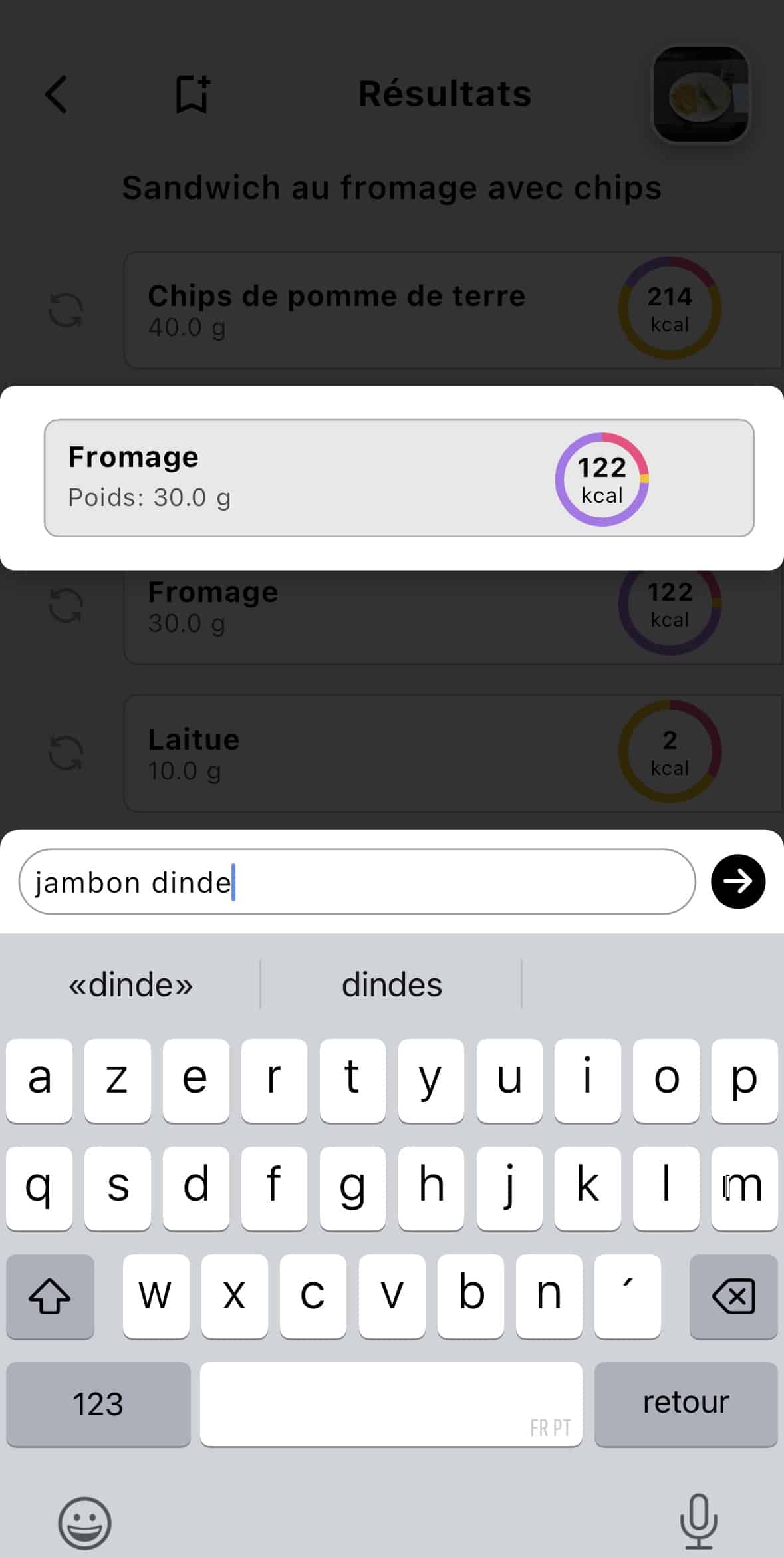
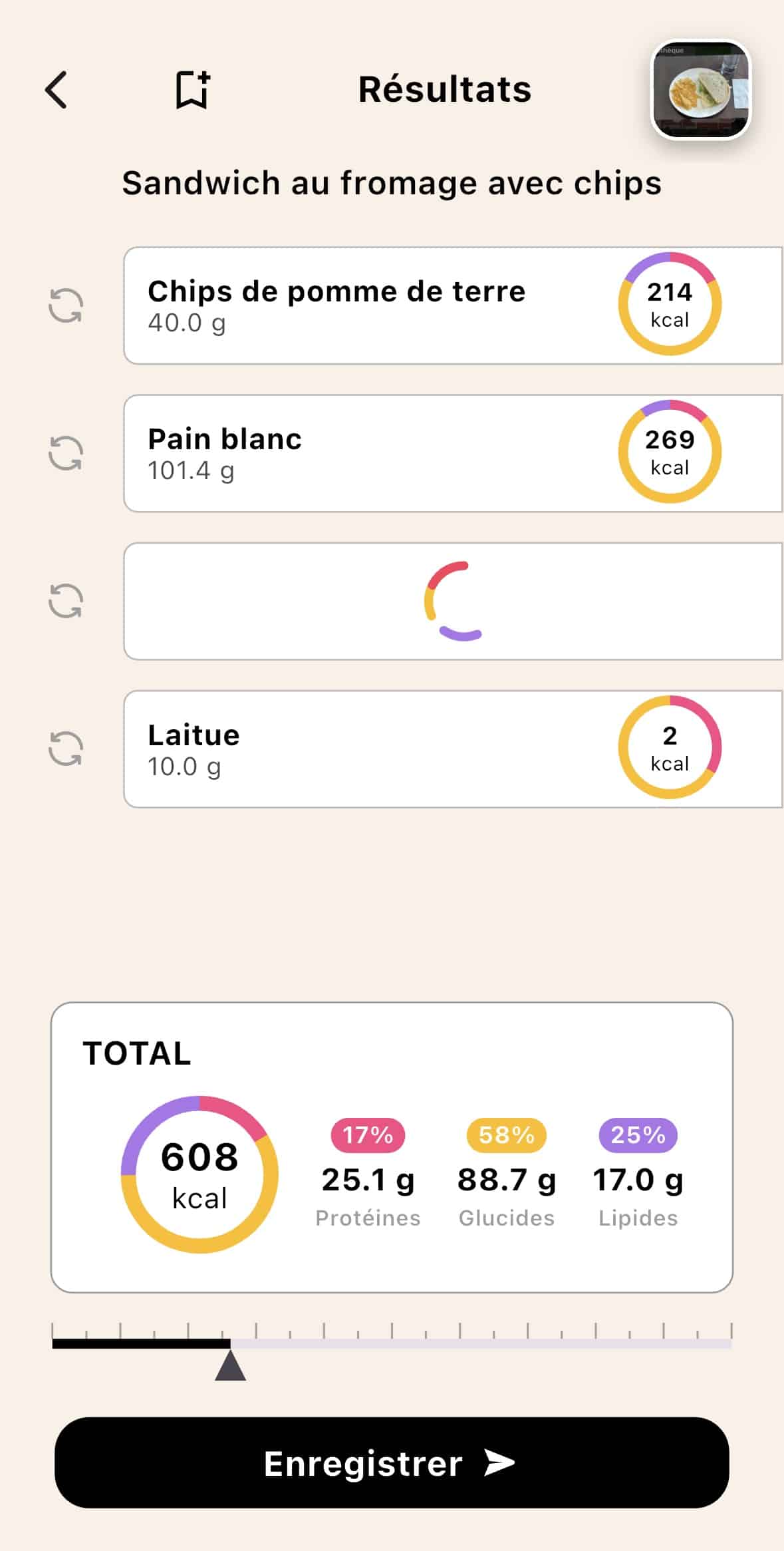
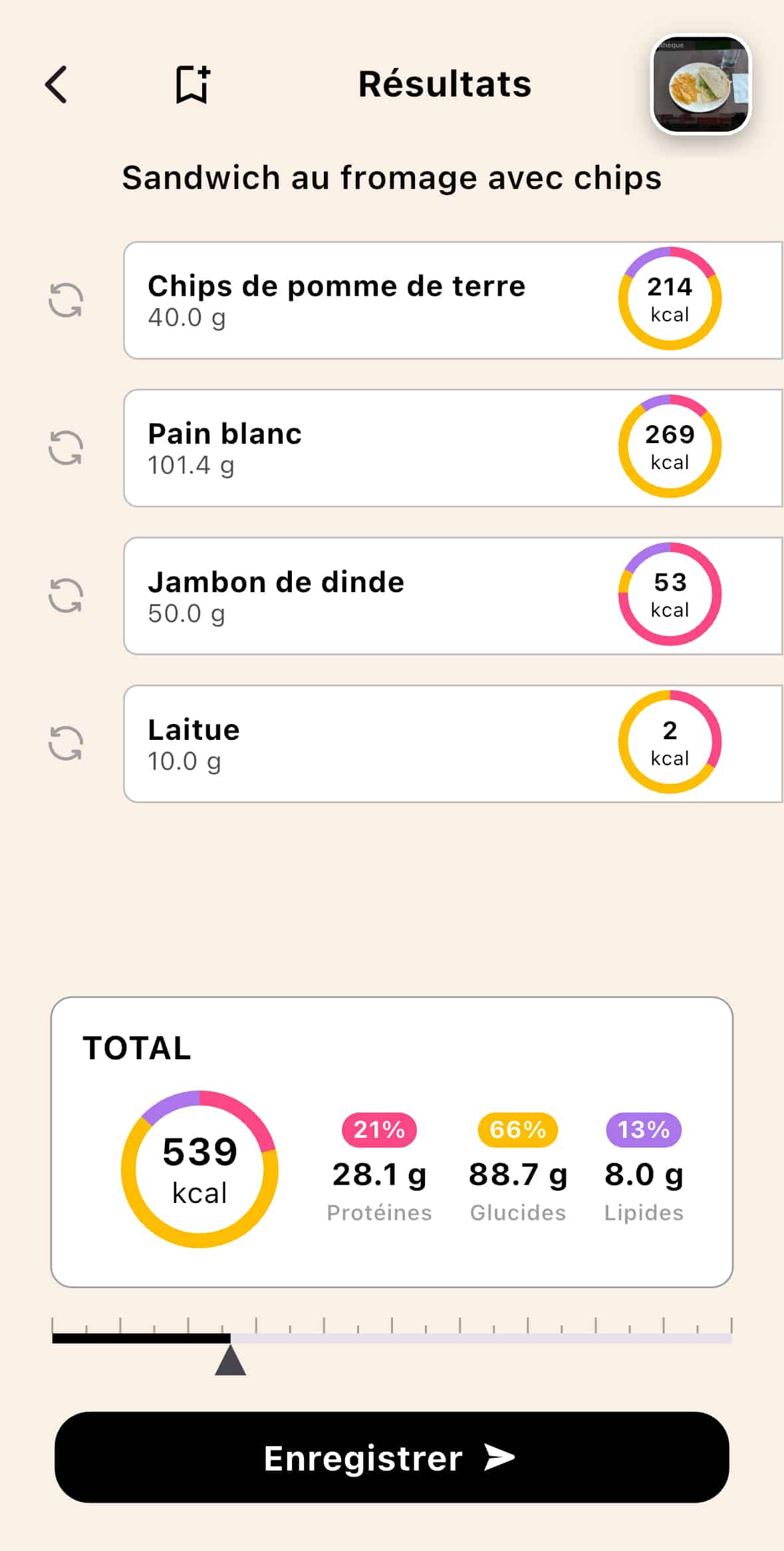
Let’s say one of the foods in the AI analysis was misidentified. With Lean, you can resend a specific request for that single item to correct the AI's analysis. For example, if the sandwich was incorrectly identified as containing cheese when it was actually turkey ham, you can easily rerun the scan just for that ingredient and update the result.
All these additional features make Lean’s AI Scan a powerful tool for tracking calories. In other apps, editing capabilities are extremely limited — which is why AI scanning is often (wrongly) criticized.
At Lean, we chose to build a tool that:
- ✅ Reduces inaccuracies by allowing the user to adjust results
- ✅ Encourages long-term use by increasing flexibility and control
- ✅ Is practical, easy, and usable in any situation
Method 2: :
Barcode Scanner
A proven and reliable method for tracking calories: simply scan the barcode of any packaged food item using your smartphone camera.
The barcode scanner is an extremely effective method for tracking calories — it brings together all the key elements needed for optimal tracking:
- ⚡ Speed of use
- 🎯 Precision in kcal and macronutrient values
- ✅ High reliability of data
The barcode scan has everything going for it. However, its only downside is that you need to physically have the product in front of you to track it — which can be tricky during family meals or when eating out.
Also, watch out for surprises: Some supermarket products only display the barcode on the outer packaging, not on the individual items inside!
Method 3: :
Food database
Lean features a vast multilingual food database, allowing you to find virtually any basic food item with ease. Access hundreds of thousands of preconfigured foods — ready to track instantly.
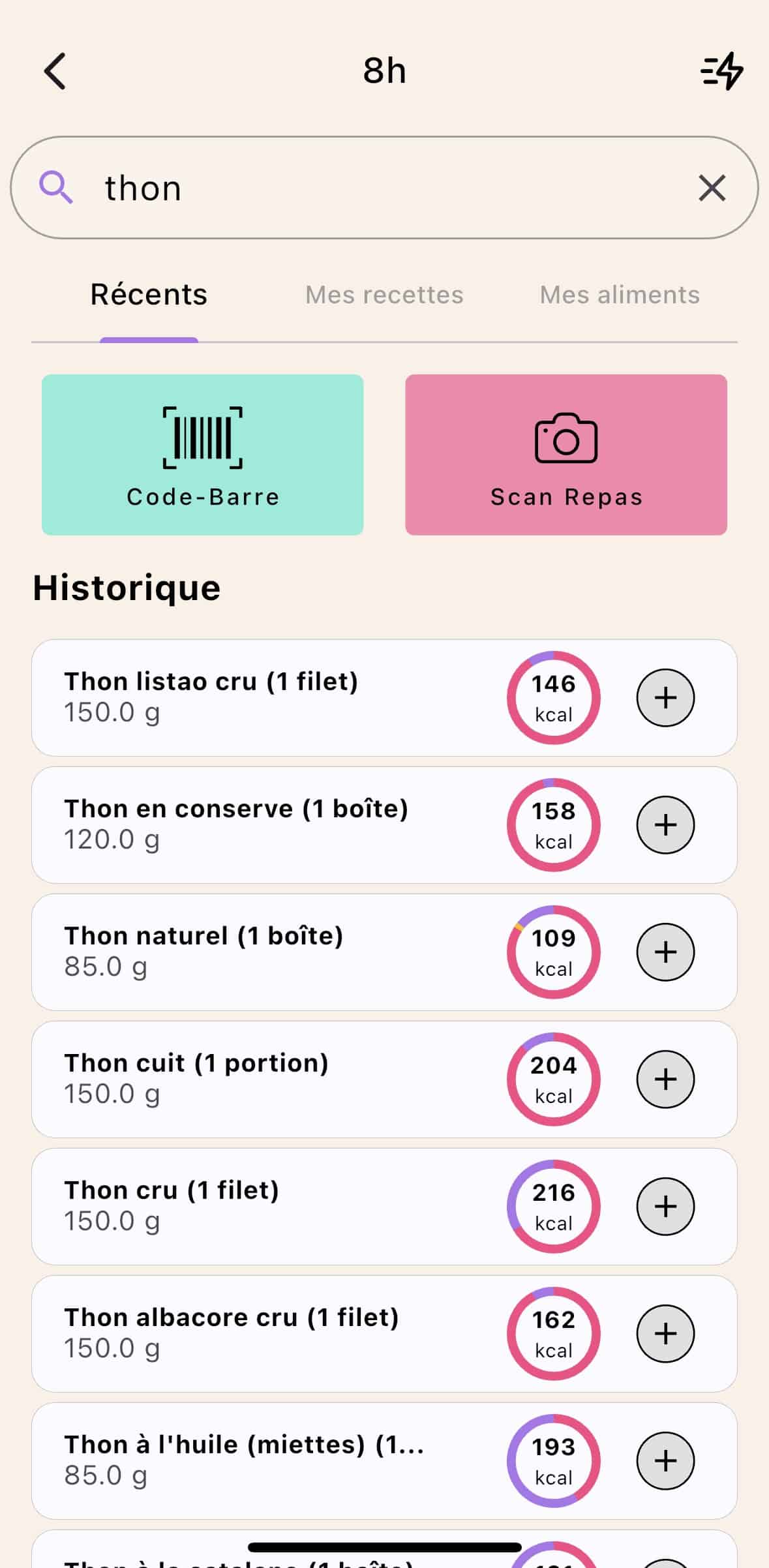

Selection of a Tuna-Based Food Find all product variations in Lean’s food database.
Tracking food using the database method is the most basic way to log calories — simple and effective. Simple et efficace.
This method is especially handy for quickly adding a food item, and it's generally very accurate.
However, for beginners, it can be a bit tricky: Choosing the right item from several variations may require some nutritional knowledge. Caloric differences between similar items can be significant, so this method demands a basic understanding of calories and macronutrient ratios (proteins, fats, carbs).
Method 4: :
Global Calorie entry
& Macro Entry
Lean also allows you to log a total calorie amount along with estimated macronutrients for an entire meal — all at once. This is ideal when you’ve already estimated your meal’s calorie count and want to log it quickly and effortlessly, without entering each food individually.
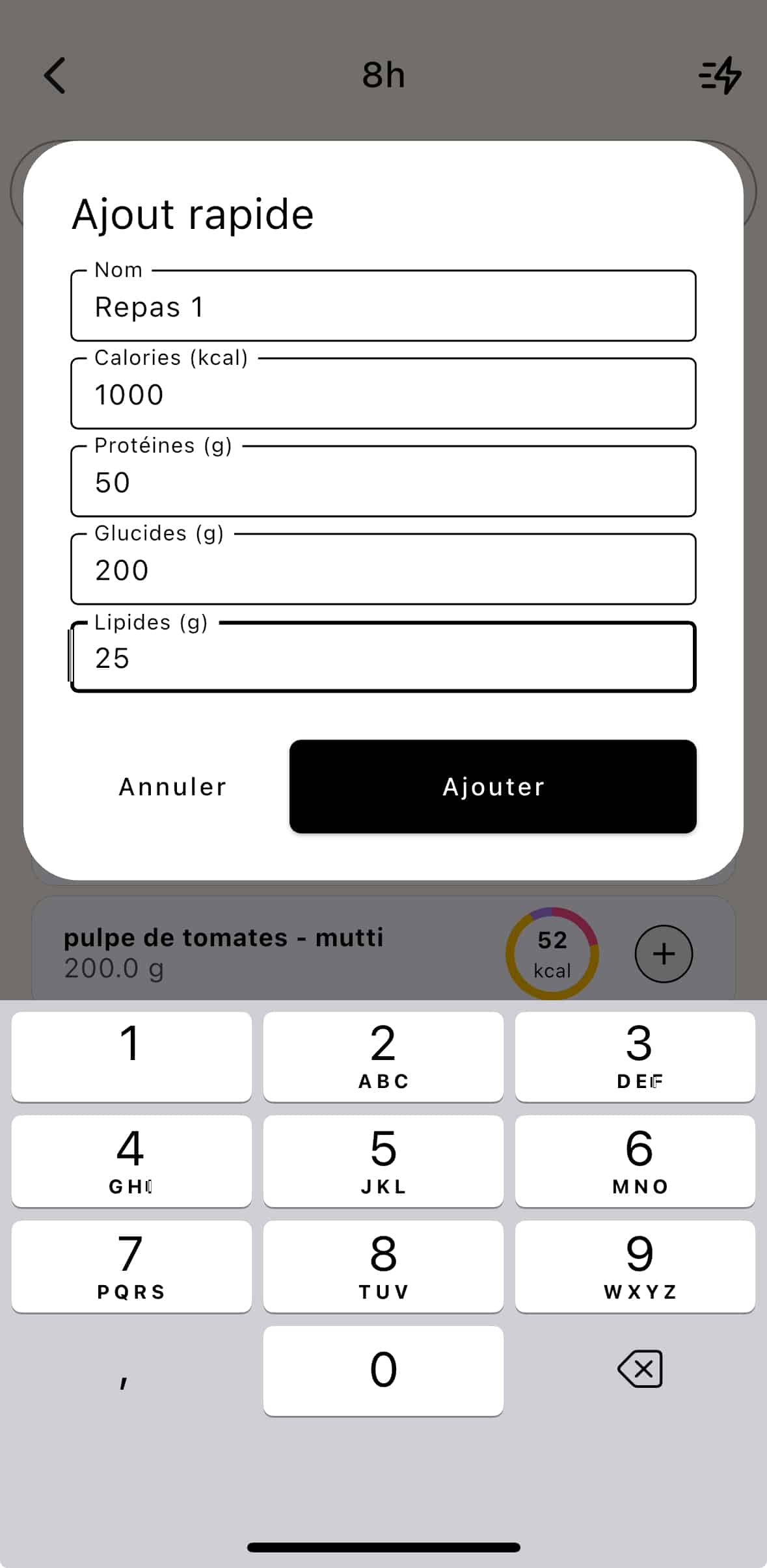
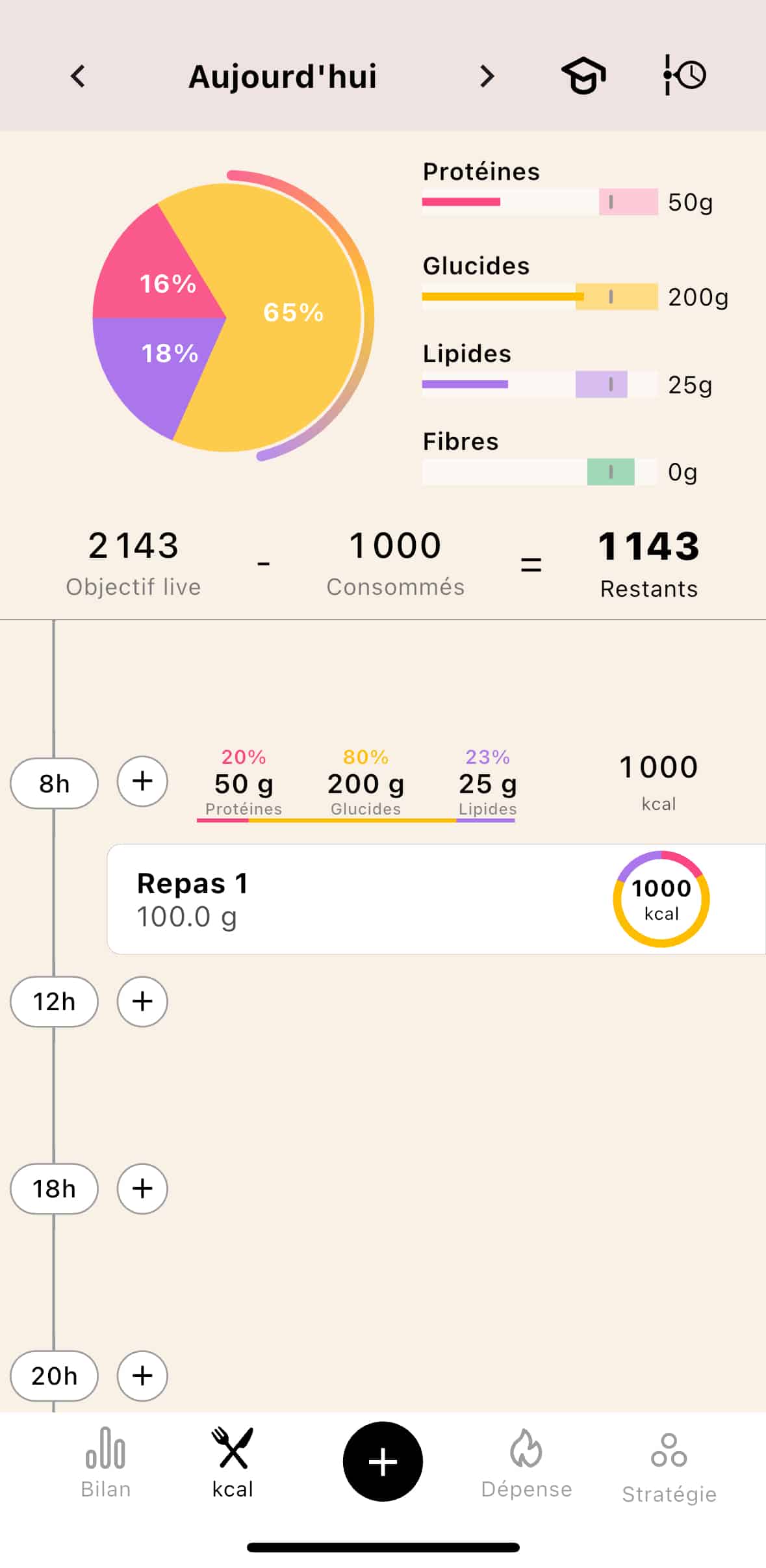
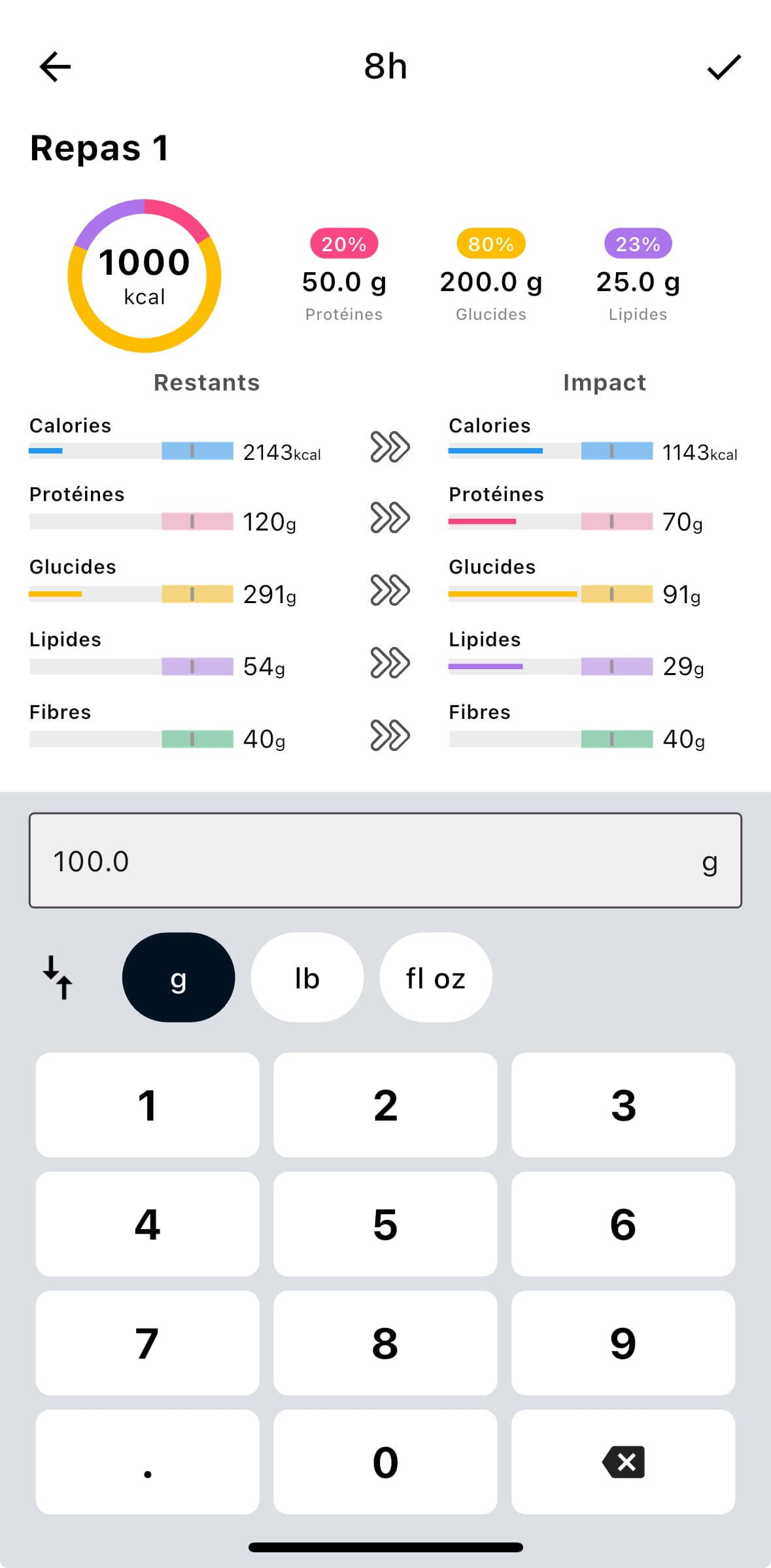
This method is fast, but it requires significant experience with calorie tracking. Being able to estimate the total caloric envelope of a meal—or choosing foods that fall within a rough range—requires solid knowledge of nutrition and dietary principles.
Still, it can be a useful option for logging untracked days and maintaining a solid overview of your calorie intake in the short or medium term. Let’s be honest—everyone slips up from time to time, and that’s okay!
Strengths & Weaknesses
of Each Calorie Tracking Method
Here’s a summary table of the pros and cons of each tracking method in Lean, based on the following criteria:
- Input Effort : How time-consuming and tedious the method is
- Availability : How easily the method can be used in any situation (at home, out, while traveling, etc.)
- Long-Term Usability : How sustainable the method is over time
- Accuracy : How precise the nutritional data is
Legend :
- – : Poor
- + : Good
- ++ : Very Good
| Method | Food database | Scan Barcode Scan | AI Photo Scan | Global Calorie entry |
| Input Effort | – | + | ++ | ++ |
| Availability | + | + | ++ | ++ |
| Long-Term Usability | – | + | ++ | – |
| Accuracy | ++ | ++ | + | – |
Analysis of the Results:
The results are quite clear:
If your priority is precision and performanceand you don’t want to leave anything to chance: Use the most accurate methodsFood Database and Barcode Scan. These give you highly reliable calorie and macronutrient tracking, ideal for maximum control and results.)
If you’re a beginner or feel overwhelmed by calorie tracking or simply want to get results without overthinking it, and feel that calorie tracking takes up too much mental space: AI Scan is made for you.is the method for you — simple, fast, reliable, and it’ll gradually guide you toward more precise tracking over time.
If you’re an advanced userwith years of tracking experience, but now feel burnt out or restricted during social meals: A flexible mix of all four methods is perfect.Use AI Scan or Global Entry when eating out, at restaurants, with family or friends. Switch to Barcode Scan and Food Database for more precise tracking when at home or during your weekly routine.
💡 Pro Tip: Create your own custom recipes to save time when eating at home — especially for meals you repeat often!
Example :
Here’s the kind of physique you can achieve by combining precise tracking (Food Database + Barcode Scan) with the flexibility of AI Photo Scanning :

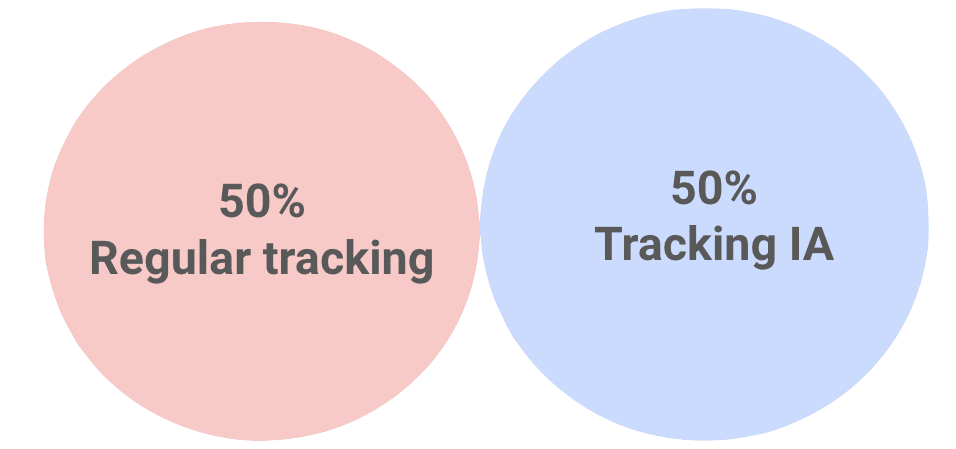
Moral of the story AI photo scanning is often unfairly criticized — but when used in the right context, it becomes a powerful ally in your long-term fat loss journey..
It’s not about tracking perfectly for two weeksit’s about tracking consistently for months — even years.The goal isn’t to be the person who logs every gram of food with perfect accuracy for 14 days straight. The real goal is to find a method you can stick with no matter the circumstances.
Let’s not forget the stat: 📉 80% of calorie tracker users (Food DB & Barcode) stop tracking after just 3 months. Don’t be a short-term user. Think long-term.Think sustainably.
Better to track with a small margin of error than not to track at all.
Still skeptical about AI Photo Scan?
Some might argue: “AI scanning isn’t accurate enough, it shouldn’t be trusted.” Let’s look at the science:
AI meal scanning has an estimated ±10% margin of error.
That means your calorie estimate might be slightly over or under — but within a manageable range.
In probability theory, the Law of Large Numbers states that: :
When an experiment is repeated many times, the average of the results converges to the true expected value..
What does that mean ?
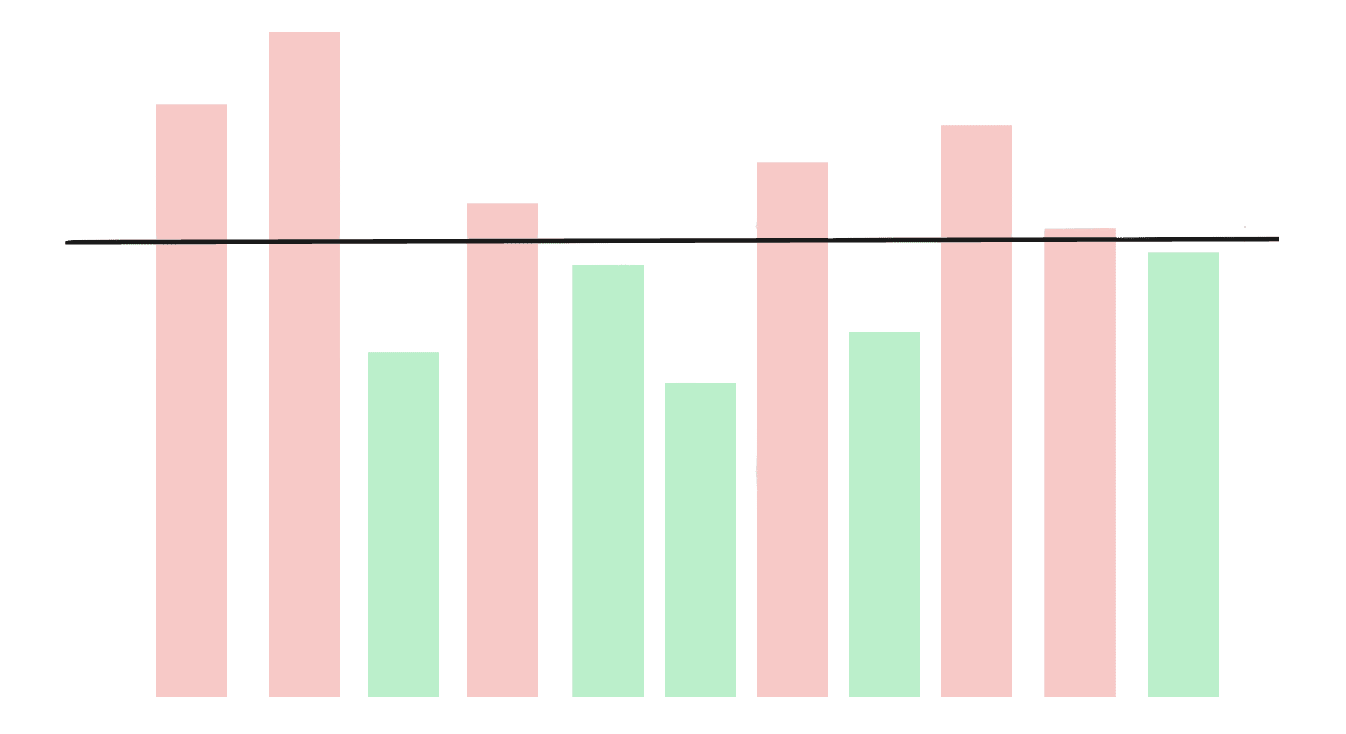
When you use AI photo scan consistently over several days or weeks, here's the kind of variation you might see compared to the actual calorie values:
- Day 1: +7%
- Day 2: +10%
- Day 3: -5%
- Day 4: +2%
- Day 5: -1%
- Day 6: -6%
- Day 7: +3%
- Day 8: -5%
- Day 9: +6%
- Day 10: 0%
- Day 11: -1%
Some days, you'll overestimate your intake. Other days, you'll underestimate it.But across many days, these errors tend to balance out.
What does science — and math — say?
According to the Strong Law of Large Numbers (also called Kolmogorov’s Law):
Even with a ±10% margin of error,
as the number of repetitions increases,
the average of your estimates will always converge toward the true value.
There is therefore no risk in using AI scanning, as the inaccuracies will balance out over the long term.
Complete Lean Tutorial
COMMENT COMPTER SES CALORIES AVEC LEAN ! F BOY
